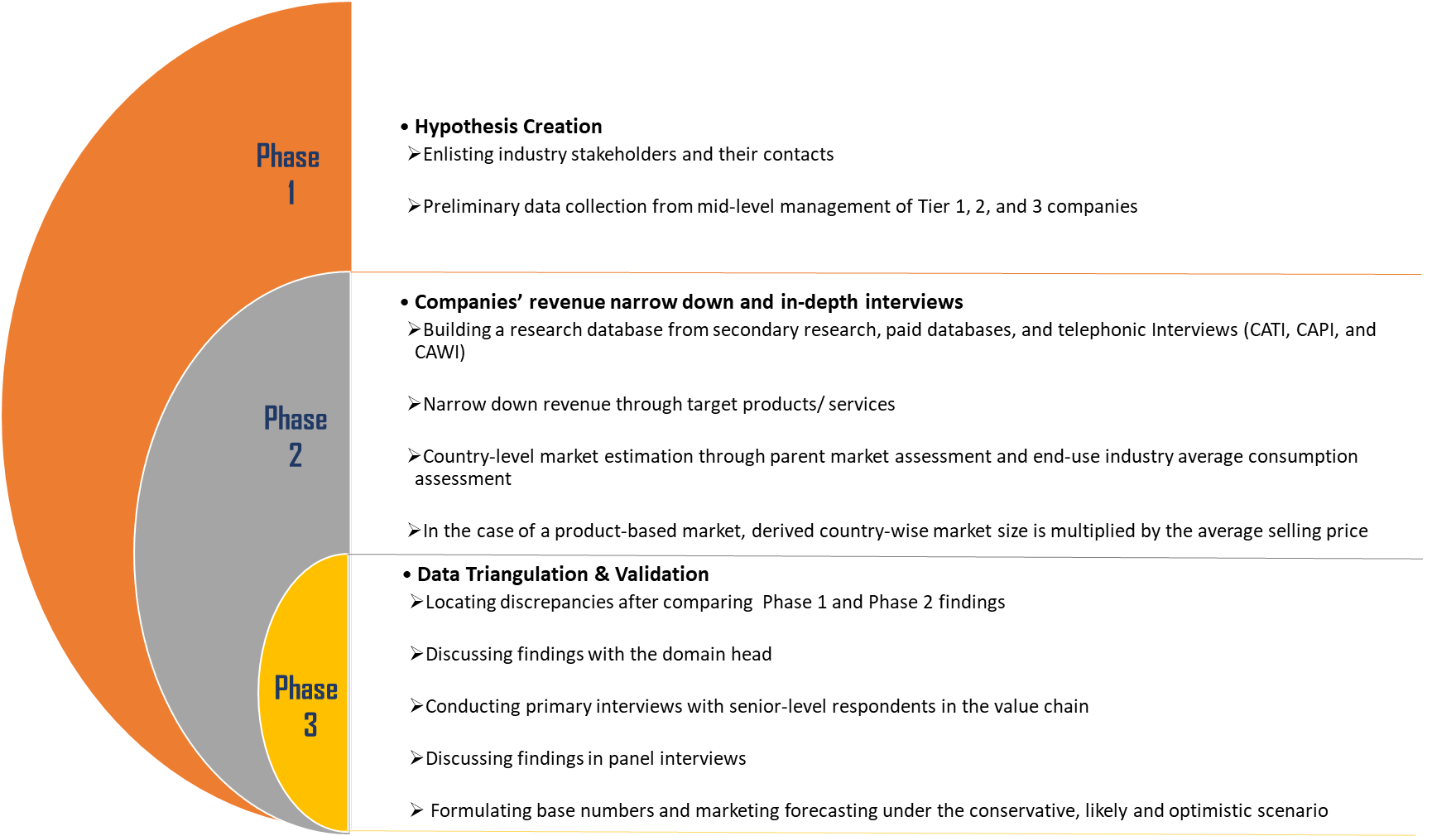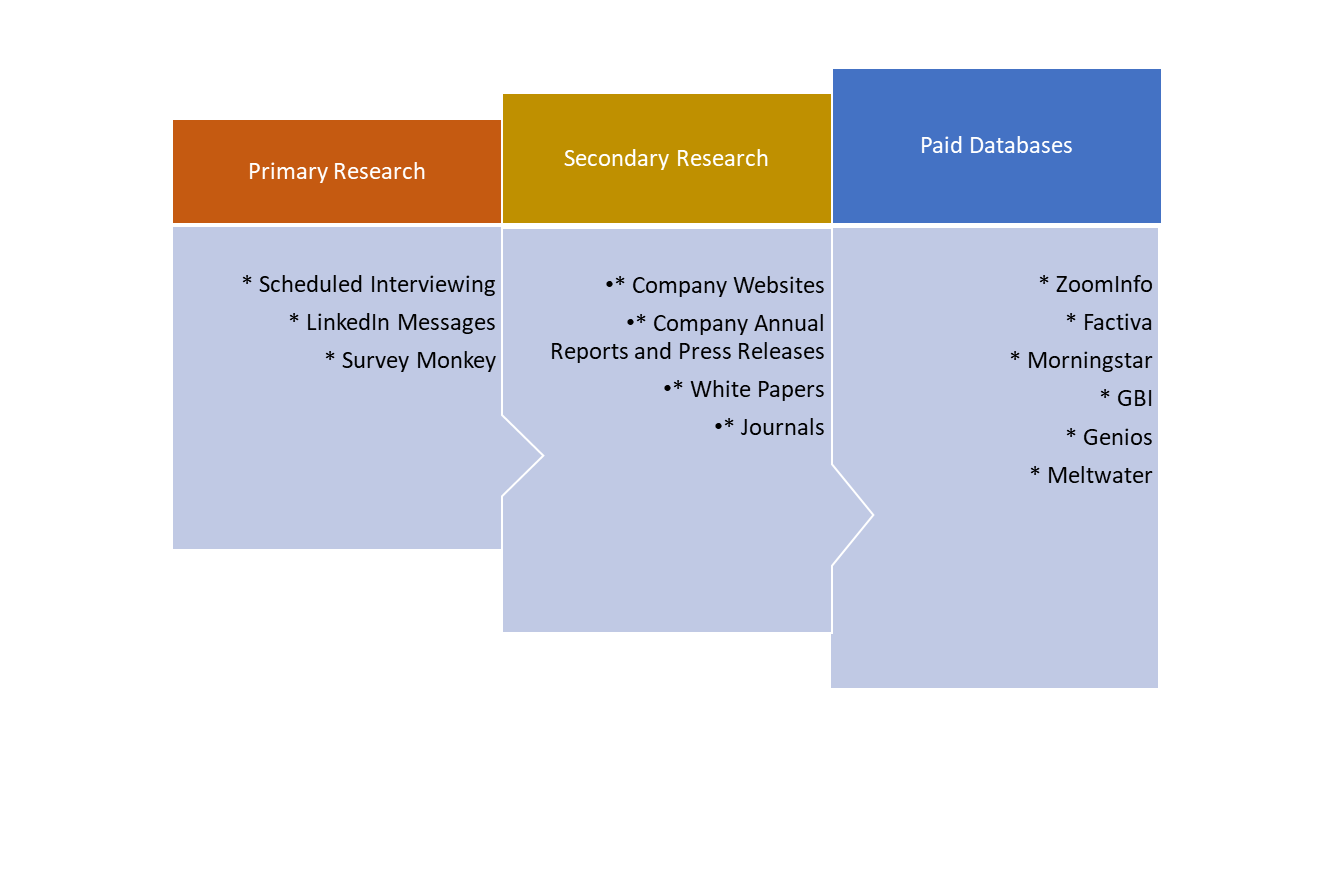Research Methodology

1. Hypothesis Creation
-
From our internal database, the manufacturers and service providers of different categories are initially enlisted. For an average of more than 40 major nations worldwide, a list of businesses is created that may have been the potential end users of the desired good or service. The primary research team obtains contact information on employees working in those firms' manufacturing and service divisions via paid contact databases, LinkedIn, and call onboard numbers. Additionally, using a similar methodology, the contact information for the suppliers of the targeted goods and services is also determined.
-
Scheduled brief telephone confirmation contacts with the mid-level management are conducted during the execution sub-phase of the research. The call's objective is to confirm that the target products/services are being used. To determine the number of target products and services offered by Tier 1, Tier 2, and Tier 3 companies, a preliminary level analysis of the data collected is conducted.
2. Revenue narrow down of Companies and in-depth interviews
-
In the following stage of the research, secondary research, paid databases, and telephone interviews are used to track the total expected income of the target product/service producers. Their revenue is reduced to calculate the revenue from the targeted goods and services. The total of their sales of the targeted goods or services is regarded as the market value, which will be further examined. To get information on the prices of various target products, secondary research and interviews are also performed. All collected prices are converted into US dollars.
-
To determine an approximate market volume (in the case of the product-based market) for each nation, the data, and information gathered during the hypothesis phase of the study are used as a sample. The data at the country level is totaled globally while taking a broad estimate of revenue from nations other than the ones on which the attention is placed into consideration. This general volume at the national and global levels is derived. The average selling price is calculated using the prices discovered during the earlier research phase. Our pricing model determines the target product/average service's selling price. To determine market value, the computed volume is multiplied by the average selling price.
3. Data Triangulation and Validation
The market value is triangulated in the third research step to look for discrepancies in the data. The potential reasons for gaps are indicated. To explain our findings, we conduct a telephone conversation with a subset of interviewees (target product/service providers). Senior analysts, research directors, statisticians, and economists collaborate to discuss the data gaps at the same time. Market value evolved as a result of second-level interviews and brainstorming sessions. Market forecasting is carried out for all segments and sub-segments across countries using internal, pre-defined statistical models, and regional and global levels are obtained by combining bottom-up and top-down methods.
